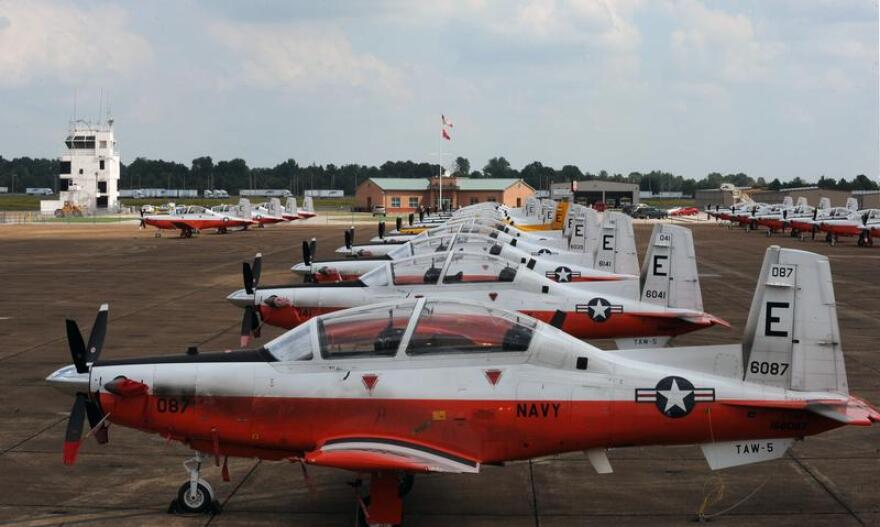Naval Air Station-Whiting Field welcomes the arrival of the 148th and final T-6B Texan II aircraft on Tuesday, signaling the complete changeover for Training Air Wing Five. The last such aircraft will arrive from the Beechcraft factory in Wichita, Kansas in a three plane formationjoined by the first T-6B and the yellow centennial T-6B.
Base spokesman Jay Cope says they’ll land at North Field, with a ceremony scheduled at the hang
ar for 3:00.
“It is the final T-6 Texan-B for Training Air Wing Five; it’s the next to the last one for the Navy,” said Cope.
“The final one is going to go to [NAS] Corpus Christi. We do about 60% of the primary aviation training with the T-6 Texan-B. Corpus Christi does about 40%.”
That final Texan, the Navy’s 252nd, is scheduled for delivery in Corpus Christi sometime next week.
Whiting Field trains aviators for the Navy, Marine Corps and Coast Guard, and this is the first aircraft they will learn to fly. The first of the T-6Bs were received in August, 2009.
“For the next year or so it was only the instructors that were training in the aircraft,” Cope said.
“And then in 2010 we flew our first student aviator. We completed the transition just a couple of years after that.”
Cope says there are differences between the T-6B Texan II and its predecessor, the T-34 Turbomentor, which was placed into service by the Air Force in 1948, and the Navy in 1975.“
[The T-34] was still using deal readouts. It was a slow aircraft, didn’t cruise at as high of an altitude. It was very durable, but the T-6 Texan B is a modern aircraft,” said Cope. “It’s got the digital readouts, the heads-up display; much stronger engine, cruises at a much better altitude [and] more fuel efficient.”
Used for primary fixed-wing flight training, TRAWING-5 has flown T-6B for more than 310,000 flight hours the past seven years. Add to that 74,000 hours flown by Training Air Wing Four in Corpus Christi. By the time a student completes the 28-week program, they will have flown 43 flight events, 75 flight hours, and 36 simulator events. The program, Cope says, gets students up to speed for more advanced training with large propeller aircraft, helicopters, and jets. As mentioned, the T-34 Turbomentor has been around naval air stations for more than four decades. Jay Cope at Whiting Field says they expect the T-6B Texan II to be flown at least that long and perhaps longer.
“Just like the T-34 Turbomentor lasted us a very long time, we fully expect that for the next 20-30 years the T-6-B is going to set the standard for primary training,”said Cope.

